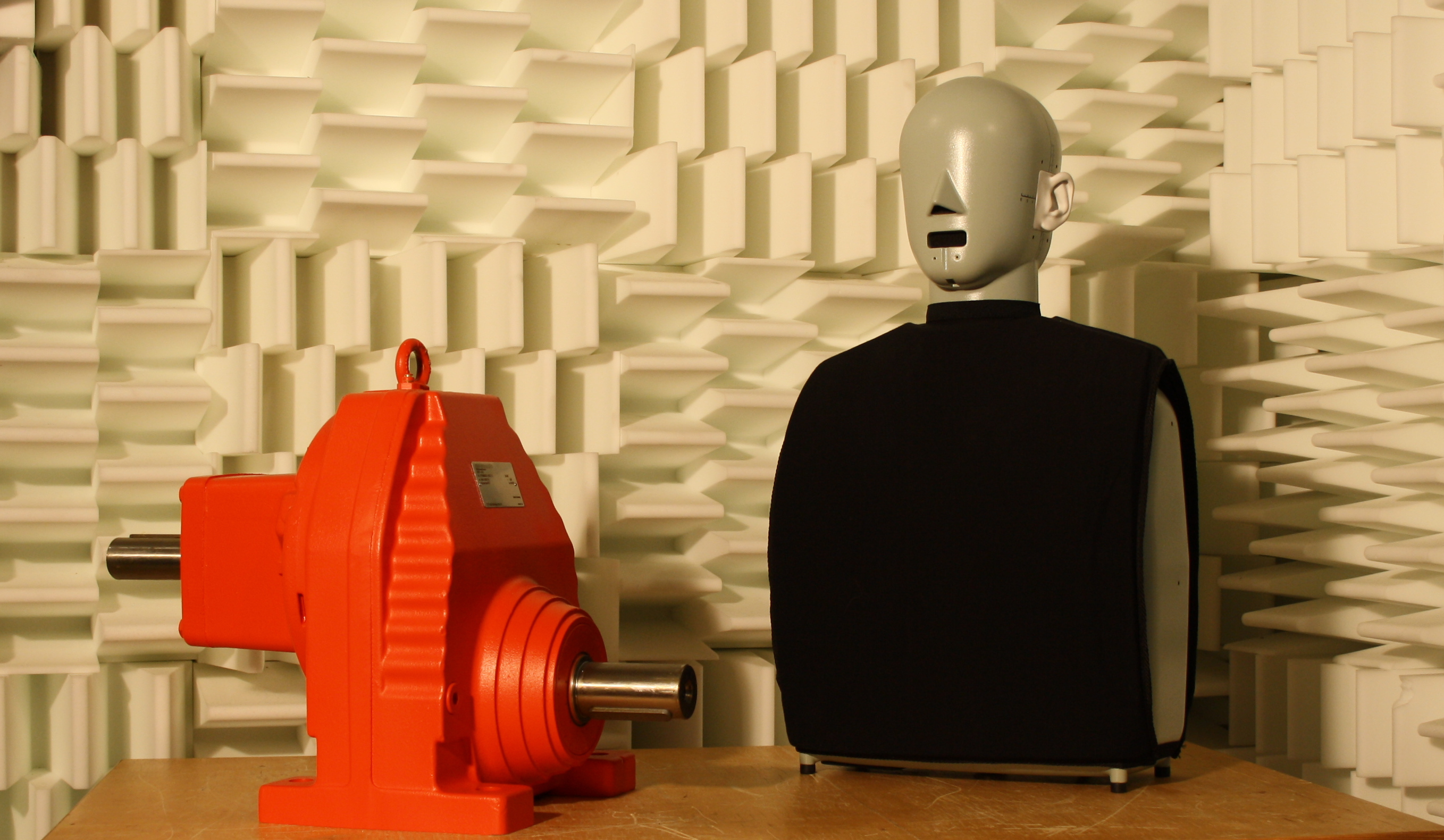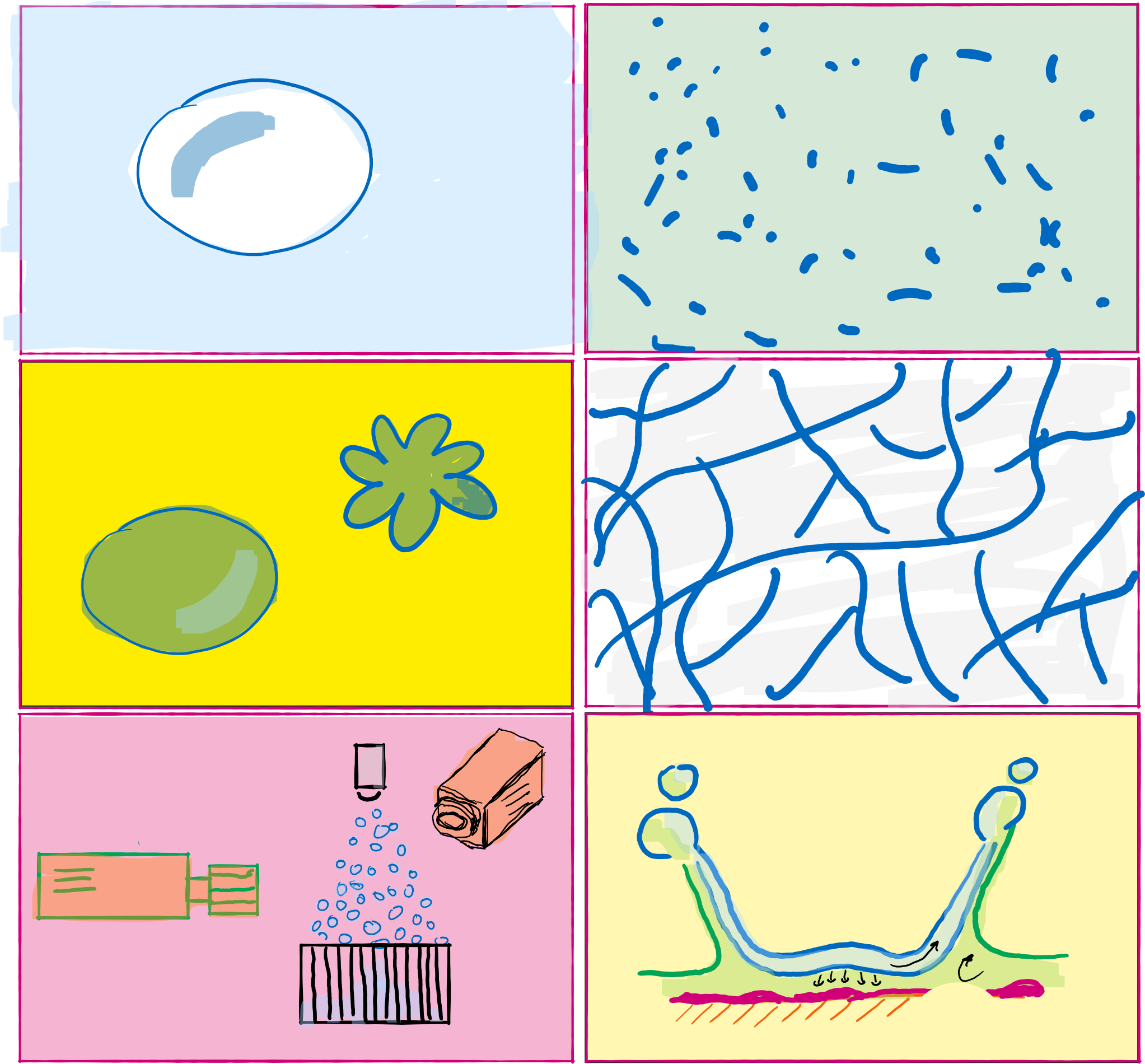
Machine Acoustics - Fundamentals
Literatur
[list]
[*]Vorlesungsfolien/Vorlesungsmitschrift
[*]Kompendium Maschinenakustik (kann während der Veranstaltung käuflich erworben werden).
[*]"Ingenieurakustik: Physikalische Grundlagen und Anwendungsbeispiele" von Hermann Henn, Gh. Reza Sinambari und Manfred Fallen
[*]"Technische Akustik" von Michael Möser
[*]"Technischer Lärmschutz: Grundlagen und praktische Maßnahmen zum Schutz vor Lärm und Schwingungen von Maschinen" von Werner Schirmer (Hrsg.)
[*]"Taschenbuch der Technischen Akustik" von Gerhard Müller und Michael Möser (Hrsg.)
[*]"Messtechnik der Akustik" von Michael Möser (Hrsg.)
[*]"Engineering Noise Control: Theory and Practice" von David A. Bies und Colin H. Hansen
[*]"Springer Handbook of Acoustics" von Thomas D. Rossing (Hrsg.)
[/list]
Voraussetzungen
no specific knowledge is required except a recommendation of basic understanding in machine dynamics, mechanics, physics, and machine elements
Online-Angebote
moodle
- Lecturer: Tobias Melz

Literature
The script and the recorded lectures will be provided to the students after each lecture.
Suggested Books
Ashgriz (ed.) Handbook of atomization and sprays. Springer 2011
Crowe, Clayton T., (ed.) Multiphase flow handbook. Vol. 59. CRC press, 2005.
Yarin, A.L., Roisman, I. V., Tropea, C, Collision Phenomena in Liquids and Solids. Cambridge University Press, 2017.
Requirements
completed course "Introduction to Fluid Mechanics"
Further Grading Information
The examination will be oral in the form of a Seminar. During the seminar a student will present a paper from a top level scientific journal. The grade will include the presentation and the answering of the questions.
Official Course Description
Multiphase flows are involved in a variety of important industrial processes, such as spray combustion, chemical engineering, food production, cleaning, oil production and many many others. Multiphase flows are typical not only to many industrial processes, but also to various natural, biological processes, including even an expansion of the viruses.
During the course students will learn the existing state of the art of the phenomena involved in the multiphase flows and the major relevant physical mechanisms. The lectures will include also the examples of the theoretical models of the most interesting phenomena. However, also some interesting mathematical tools, novel diagnostic instruments and computational approaches will be introduced.
After the course students will be able to chose a suitable diagnostics for spray transport characterization, they will be able to chose a suitable method for numerical simulation of spray propagation, for the flow in the suspensions, bubbly flow with cavitation or in the porous media. They will be aware on the modern theoretical approaches in the field of multiphase. Moreover, this course will be very helpful for the succesfull master or doctoral studies in the framework of several SFB research centers at the Faculty of Mechanical Engineering.
Online-Angebote
moodle
Ashgriz (ed.) Handbook of atomization and sprays. Springer 2011
Crowe, Clayton T., (ed.) Multiphase flow handbook. Vol. 59. CRC press, 2005.
Yarin, A.L., Roisman, I. V., Tropea, C, Collision Phenomena in Liquids and Solids. Cambridge University Press, 2017.
Voraussetzungen
abgeschlossener Kurs "Technische Strömungslehre"
Erwartete Teilnehmerzahl
10
Weitere Informationen
Die Prüfung erfolgt mündlich in Form eines Seminars. Während des Seminars wird ein Student eine Arbeit aus einer wissenschaftlichen Zeitschrift der Spitzenklasse präsentieren. Die Note beinhaltet die Präsentation und Beantwortung der Fragen.
Offizielle Kursbeschreibung
Mehrphasenströmungen sind an einer Vielzahl wichtiger industrieller Prozesse beteiligt, wie z. B. Sprühverbrennung, chemische Industrie, Erdölförderung, Filtration und viele andere. Mehrphasenströme sind nicht nur für viele industrielle Prozesse typisch, sondern auch für verschiedene natürliche, biologische Prozesse, einschließlich sogar einer Expansion der Viren.
Während des Kurses lernen die Studierenden den aktuellen Stand der Phänomene der Mehrphasenströmungen und die wichtigsten relevanten physikalischen Mechanismen kennen. Die Vorlesungen enthalten auch Beispiele für theoretische Modelle der interessantesten Phänomene. Es werden jedoch auch einige interessante mathematische Werkzeuge, neuartige diagnostische Instrumente und rechnerische Ansätze vorgestellt.
Nachdem die Kursteilnehmer eine geeignete Diagnose für die Charakterisierung des Sprühtransports auswählen können, können sie eine geeignete Methode zur numerischen Simulation der Sprühausbreitung, für den Fluss in den Suspensionen, den sprudelnden Fluss mit Kavitation oder in den porösen Medien auswählen. Sie werden sich der modernen theoretischen Ansätze auf dem Gebiet der Mehrphasen bewusst sein. Darüber hinaus ist dieser Kurs für das erfolgreiche Master- oder Doktoratsstudium im Rahmen mehrerer SFB-Forschungszentren an mehrere Instituten der Fachbereich Maschinenbau sehr hilfreich.
Online-Angebote
moodle
- Lecturer: Ilia Roisman
Material modelling
[list]
[*]Cyclic, rate-independent plasticity: hardening, Bauschinger-effect, Masing-behavior, Memory-behaviour (Cyclic Plasticity)
[*]Description of temperature induced, rate-dependant plasticity resp. viscoplasticity (Creep)
[*]General structure and categories of material models within the structural mechanic simulation approach Finite Element Method (FEM)
[*]Implementation of Cyclic Plasticity and Creep within the FEM: Incremental Theory vs. Deformation Theory
[*]Example application within the FEM-Software ANSYS and ABAQUS
[/list]
Damage & Lifetime
[list]
[*]Introduction of the term Damage & microstructural aspects
[*]Basics with regard to effects like: mean stress, multiaxiality and superposed loading
[*]Phenomenological description of creep-fatigue interaction
[*]Constitutive, unified material- and damage models
[*]Example application Lifetime Analysis of a component
[/list]
Numerical Fracture Mechanics
[list]
[*]Recap of Fracture Mechanic fundamentals
[*]Creep Fracture Mechanics: Basics
[*]Description and relevance of Crack Closure: forms, analytical and numerical approaches
[*]Numerical description of cracks within the FEM in 2D and 3D
[*]Example application Assessment of a real component crack with ANSYS and ABAQUS
[/list]
- Lecturer: Matthias Oechsner
The course Information und Communication Technology (ICT) will be held as an [b]online teaching[/b] in WiSe 20/21. The lecture will be digitally broadcasted and complemented by additional digital materials such as demonstrations and exercises.
The online teaching will start in week 45 ([b]starting 02.11.2020[/b]) and will take place on the weekdays and times specified in the schedule (see TUCaN). The available room details for the individual dates in TUCaN represent the original attendance planning and will be replaced by the online teaching.
The technical access to the online teaching takes place via Moodle. Here you will also find the link to the online broadcast before the lecture. You were automatically registered for the ICT Moodle course when you registered in TUCaN. If you have any problems with the Moodle course, please contact the supervising research assistant Tim Giese (giese@dik.tu-darmstadt.de). You will then receive all further information via Moodle.
Lehrinhalte
The aim of these lectures is to teach the fundamental principles of information
technology, focused on the application in mechanical engineering.
The contents and syllabus are geared towards the information technology required
by the mechanical engineering industry.
The basics are presented under following headings:
1. Introduction to information and communication technology
2. Methods for object-oriented software engineering
3. Data structures and algorithms
4. Mathematical and technical fundamentals
5. Communication and network technology
6. Methodological application of information and communication technology
The educational goals are:
- classifying hardware techniques and specifying the characteristics of software
- distinguishing simple object-oriented structures and appling them to object-oriented software engineering
- developing data structures and algorithms to solve use-case specific tasks
- explaining the relation between operating systems and application systems
- describing the progress of network technology
The accompanying tutorial in addition to this lecture is "Programmiersprachen
und -techniken" (Lv.Nr.: 16-07-5010-hü).
Literatur
course documentation
Voraussetzungen
none
Online-Angebote
moodle
- Lecturer: Reiner Anderl
moodle
- Lecturer: Eckhard Kirchner
Online-Angebote
moodle
- Lecturer: Eckhard Kirchner
- Lecturer: Stephan Rinderknecht
- Lecturer: Gelöschter User (TU-ID gelöscht)
Erwartete Teilnehmerzahl
600
Zusätzliche Informationen
Das Product Design Project (PDP) ist eine eigenständige Lehrveranstaltung, die in Kooperation durch das Institut für Mechatronische Systeme im Maschinenbau (IMS) und das Fachgebiet für Produktentwicklung und Maschinenelemente (pmd) organisiert wird.
Fachlich ist es den Lehrveranstaltungen Maschinenelemente und Mechatronik zugehörig. Grundsätzlich wird die Aufgabenstellung des PDP in Kleingruppen bearbeitet und teilt sich in drei Teile:
- Konzeption (IMS & pmd)
- Modellbildung und Simulation (IMS)
- Konstruktion (pmd)
Im Wintersemester 2016/17 wird die Hauptorganisation vom pmd durchgeführt.
Weitere Informationen zur Organisation werden über http://www.pmd.tu-darmstadt.de und moodle bekanntgegeben.
Online-Angebote
moodle
- Lecturer: Eckhard Kirchner
- Lecturer: Stephan Rinderknecht
moodle
- Lecturer: Eckhard Kirchner